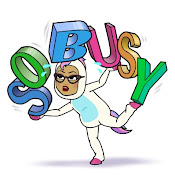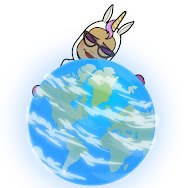The topic of conversation as of late amongst my peers is the culture of mask wearing.
It comes down to empathy and consideration of others over personal freedoms. How do
We communicate this? I have come to the conclusion that you cannot teach empathy
with a flick of a wand. Similarly, knowing one’s own personality, feelings, desires, and
motivations is Not always innate. Self awareness skills need to be cultivated over time
and explicitly Taught. Eurich, a psychologist and business coach states that “ Research
suggests that when we see ourselves clearly, we are more confident and more creative.
We make sounder decisions, build stronger relationships, and communicate more
effectively” (Eurich, 2018). As we help mold 21st century learners, we need to find ways
to make lasting impressions that will follow them beyond their current learning
environment and adapt and connect it to their future endeavours. Peels school board in
Ontario have created a vision document and 3 year plan for creating a 21st century
learning commons. Tony pontes, director of the school board, commits to "inspiring
student success through the implementation of innovative instructional practices,
reliable technology and strong technical support, and equity of access for all.
Together, we continue to create learning environments where modern learners are
inspired to learn, collaborate, create and connect with the world" (Pontes, 2018). He
succinctly describes what all of us envision in our classrooms and learning commons.
 |
image from peelschools.org
|
Further Development of the Vision:
Developing Self Awareness Through MyBlueprint, a Digital Portfolio
 |
image from bitmoji.com
|
Learner Considerations: Who's Lookin'?
who is a part of a student's learning network? Their teachers, parents, families, and
peers. A child's learning network is vast and all their stakeholders would find value to
see what they are learning and HOW they are learning. Teachers that would be
interested in pursuing digital portfolios within grade groups, the school, the district,
and globally would also be potential audiences. For me, I need to see an app or
program, and have someone show me and vet it if I were to try it out. Knowing that
there is someone I can communicate, ask questions, show my progress and get feedback
makes a program more desirable to use. At school, I never would have tried Daily 5 or
words their way, if I didn't know many of the staff were using it. I had that safety net
if I was trouble shooting. Personally, just starting a blog was daunting. I began with
one blog format and had extreme difficulty. I then started a new avenue, and if two
colleagues from the program didn't reach out to me and help me step by step, I wouldn't
have continued with this choice either. You don't become a wizard at things overnight.
Potential Audience for Artifact
There are many resources available from MyBlueprint's website:
when planning a journal, typing a reflection or preparing materials to publish in their
student portfolio, there needs to be some background knowledge and reasoning, lesson
planning that should go on; a blended model approach.
I plan on preparing some beginning lesson plans to support using the "About Me" section
of My Blueprint. I initially planned on teaching metacognitive skills as well, but with
time constraints and access to technology, I bit off a bit more than I could chew. I
appreciate the Blended learning approach to the digital portfolio because I have more
formative assessment opportunities to evaluate how their self-awareness skills have
progressed. as well, because students are also just learning how to navigate using a
tech device and typing, as well as having very few minutes of the day, it may not be
thoroughly capturing their reflections. This coursework is for a librarianship diploma
and it just seems right to be including possible literature to support digital learning.
Preparing My Artifact: Lesson Plans to Get Started
There are many links and tutorials for educators to get started on myblueprint from
the company itself. However, there isn't a HOW to actually teach each of the elements
of reflection, journalling, and resources to make it meaningful, like templates for
drafts and picture books (I'm gearing my lesson plans for primary). I have been able to
make progress through the "About Me" section of My Blueprint with my Grade 3s and
they 100% enjoy it. They are even beginning to notice what comes easy to them, like
creating an avatar, persevering through technical difficulties, and what has been
challenging like I want to say more, but I can't type fast enough. As we learn together,
I have been keeping mental notes of how I could revise the delivery of certain sections
of my blueprint, how a book here, or a writing draft there could have strengthened the
class' productivity. This made me think of how I would have really appreciated more of
a teacher's manual of how to get started, not the technical aspect, but the teaching
aspect.
image from support.apple.com
I am continuing my professional development with apps and digital programs, and pages
is one that I have yet to use. I like how it is visual, you can record audio and pictures,
and is editable for others. Because the district uses apple products, it will be
streamlined and teachers will not have to worry about downloading adobe, Vimeo
extensions, etc. I am really looking forward to creating a working document that can
drum up discussion, collaboration, and utility.
My vision for the future continues to be that of one where my classroom or SLLC is a
place of community, collaboration, and engaged learning. I strongly feel by reflecting
and becoming more explicitly aware of their learning process via digital portfolios
alongside a blended model of traditional teaching approaches and technology will help
facilitate 21st century skills like critical thinking, creativity, leadership, and digital
literacy. Time to start a'brewing!
image from bitmoji.com
Works cited
BluePrint, M. (n.d.). My Blueprint. Retrieved November 20, 2020, from https://myblueprint.ca/about
Board, P. (n.d.). Empowering Modern Learners. Retrieved November 20, 2020, from https://www.peelschools.org/aboutus/21stcentury/Pages/default.aspx
Eurich, T. (2020, November 01). What Self-Awareness Really Is (and How to Cultivate It). Retrieved November 19, 2020, from https://hbr.org/2018/01/what-self-awareness-really-is-and-how-to-cultivate-it
Pages - Apple (CA). (n.d.). Retrieved November 21, 2020, from https://www.apple.com/ca/pages/













































